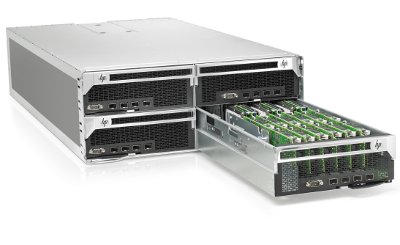The latest release of the open-source Xen hypervisor features support for processors based on the ARM architecture – one of the low-power “wimpy-core” alternatives to x86 chips that dominate the server market.
The Linux Foundation, into which the Citrix-lead open-source project was folded in April, announced Xen 4.3 (the latest release of the hypervisor) earlier this week. The ARM port in the release is a “technology preview,” is basically another term for beta, Stefano Stabellini, a principal software engineer at Citrix and a key Xen developer, said.
The ARM architecture dominates the mobile-device market, but is picking up steam in the power-conscious world of servers. IT vendors large and small have rolled out servers based on products by chip makers like Calxeda and AMD who license the architecture from UK-based ARM Holdings.
The Xen ARM port has been validated for both 32-bit and 64-bit ARM chips, Stabellini said, although the 64-bit port was tested on a simulation, since no 64-bit ARM hardware is available yet. Still, he said, the hypervisor is perfectly capable of running on 64-bit ARM motherboards when they do arrive.
The 32-bit port was tested on a motherboard based on ARM processors by Samsung and on a Versatile Express board ARM made for processor makers to try out their ARM chips.
The Xen Project open-source community has validated the Xen port on both ARMv7 and ARMv8 platforms.
Andrew Feldman, general manager of AMD's server business, said Xen hypervisor support for ARM was big news for the ARM server market.
“I think it's very significant,” he said. “It's part of continuing rapid expansion of the [ARM server] ecosystem.”
The architecture is currently considered best fit for mega-scale data center operators with homogeneous workloads – the Googles and Facebooks of the world. This development is another step in ARM's journey from the mega-scale market to public and private cloud providers' data centers and then on to the enterprise data center, Feldman said.
vSphere, the hypervisor by Citrix' arch rival in the server-virtualization space VMware, currently does not support ARM. VMware CEO Pat Gelsinger, in fact, has publicly expressed skepticism about the significance of ARM in the data center market.
Gelsinger is a former Intel man who spent decades working on the x86 architecture.
Asked whether he thought VMware was missing the mark by not supporting ARM, Feldman said large companies that had experienced tremendous success in a market inherently faced “innovator's dilema” in rapidly emerging new markets. His guess is that VMware is watching the ARM-server space carefully.
“I have my beliefs that VMware will support it overtime,” Feldman said, adding that all major operating systems would eventually support the architecture as well.
“This is a huge step forward and part of a drum beat that's happening that will transform the server landscape,” he said.
Other enhancements in the new Xen hypervisor are support for physical hosts with more RAM (now from 5TB to 16TB) and beta integration with Open vSwitch, an open-source network-virtualization stack.
Users of previous versions of Xen could not use Open vSwitch in their environment without doing some manual work, Stabellini said. “Now, it's available out of the box.”

